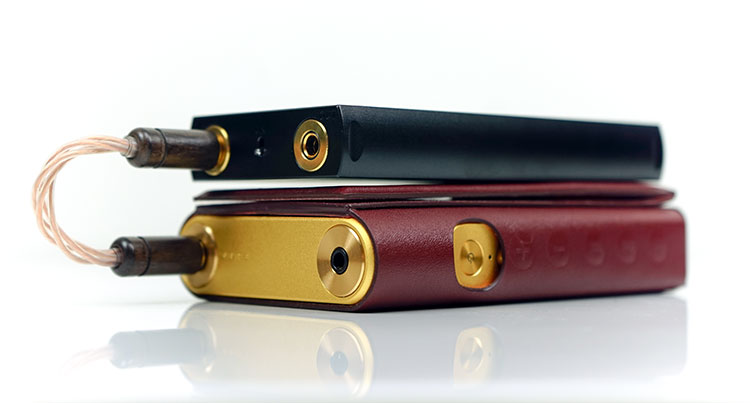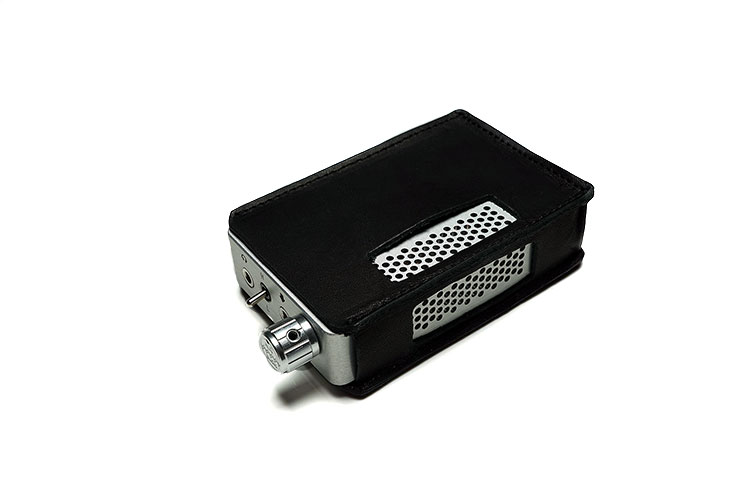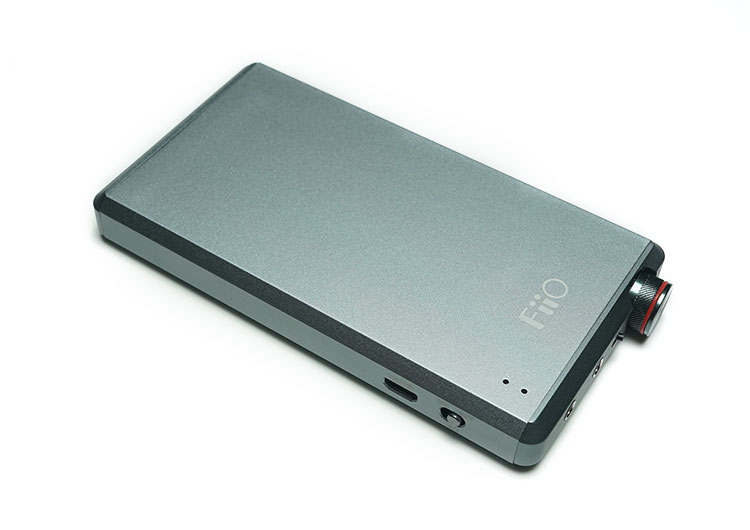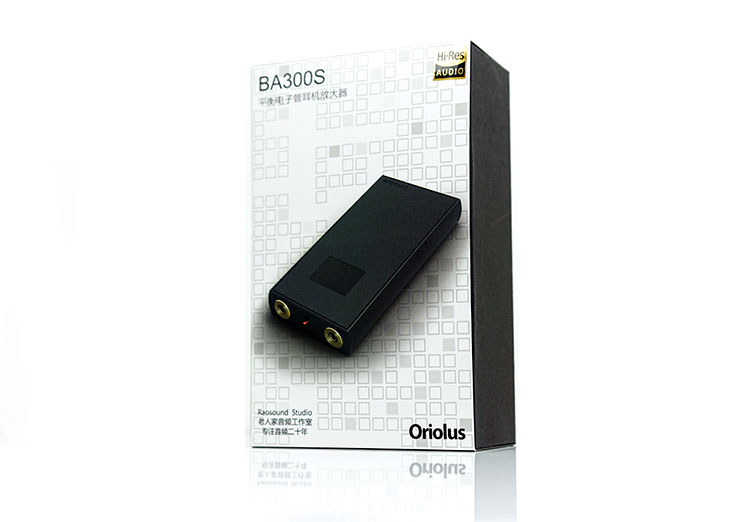Sound Impressions
Summary
The BA300s is every bit a tube amp and not some opamp fake with a couple of ‘flashlights’ stuck in the middle. This is a smooth sounding rich presentation with a softish euphonic timbre that is super easy on the ear.
I must advise caution that it is not an overly smoothed-out presentation with my Sony 1Z. The detail is there, it is just not as “solid-state” or digital sounding as you might be used to and certainly, a lot fuller sounding than the 1Z’s stock sound signature.
Treble Smoothness
What impresses me is the way the treble is handled on both source and headgear using the BA300s. With IEMs that you might consider being on the brighter side the BA300s adds a little more body and a slightly wetter or softer attack.
You still get the articulation and extension but it sounds less lean, possibly not as bright either. Monitors like the Andromeda and 64 Audio A18 will sound a lot more relaxed with the BA300s pairing than without it.
Bass Power
The BA300S also colors the low-end with a bit more weight, especially on the sub-bass response and of course an enhanced level of mid-bass warmth. It is not quite as tight and nimble sounding as the stock 1Z low-end sound and the decay is just a hint slower also. However, the BA300S sounds more powerful and creates a better sense of depth on most monitors I tried them with.
Timbre
The BA300S has a definite even harmonic bias in its presentation but no surprise given its tube design. I have heard more neutral desktop tube amps recently such as the Auris HA-2SE so this is a bit on the warmer side of the Auris.
It is also not quite as mid-centric and sweet sounding as the ALO Audio V5 portable tube amp. This is all about richness and body without a hint of sharp-sounding partial overtones.
Synergy
Efficiency
The BA300S does not offer a completely black background for very efficient IEMs though the gain and volume control via the DAP will allow a very nice level of loudness control.
That being said, I am used to the completely black background of my Sony 1Z for the likes of the Phantom and Andromeda IEMs, and with the BA300s there is a minor level of hiss. To be fair it is not as audible as the V5 with the Andromeda so Oriolus has done a decent job of reducing that plus tube microphonics.
Hum
The other concern is the odd general electrical interference or hum when the 1Z is sitting on the BA300s. That too can be audible with super-efficient IEMs. You also get a little pop noise when the tubes are operational after powering on but nothing substantial.
Once you go beyond 30Ω IEMs and headphones or less sensitive gear the hiss dies away and you do get a blacker background.
For example, on the Campfire Audio Vega and Westone’s ES80, you get a completely black background and zero noise or electrical hum from the BA300s.
The Vega has a sensitivity rating of 102dB but it does need plenty of power to sound just right. The ES80 has an 80Ω impedance rating so it’s a good pairing for the BA300s in terms of low noise.
Pairings
I tended to avoid v-shaped signatures with the BA300S and instead opted for n-shaped or mildly u-shaped presentations.
That softer lush sound of the BA300S overly softens the low-end of some monitors such as the new Campfire Equinox and the Clear Tune Monitors VS4 leaving them a bit muddy sounding. I tend to prefer something a bit cleaner to keep the balance of the weightier low-end under better control.
Examples
Anything that you find a bit lean or sterile sounding will benefit from the BA300S tube treatment, especially with monitors. The A18 from 64 Audio was both quiet and hiss-free and also a lot chunkier sounding with thicker mids and a warmer low-end using the BA300s.
Some might miss the razor-sharp accuracy with this pairing but others might welcome the softer richer tone instead. Certainly, the dynamic range with the BA300s instead of just the 1Z is a step up. This is an interesting and at times relaxing yet detailed combination.
Despite the noise levels, the Andromeda is also a fun match with the BA300s once the music gets going. The BA300s seems to excel with musical u-shaped presentations as well as adding a touch of softness to the excellent Andromeda treble performance.
Dynamic range is a little better with the BA300s over just the Sony 1Z 4.4mm output alone. The pairing sounds a little more expansive and deeper though the timbre is a touch softer and warmer in tone.
Select Comparisons
ALO Audio V5
$799
Technical
The V5 is a little shorter and fatter than the BA300s. It has more of a classic portable amp form factor with a nickel alloy silvery finish compared to the matte black of the Oriolus amp.
ALO Audio are also more upfront about their tubes and they use a single (NOS) dual triode 6111 tubes inside the V5 compared to what I presume is a dual 6111 vacuum tube system in the BA300s.
The V5 has a little more power with a +10dB gain factor compared to the BA300s’s +3dB. The BA300s does have a bit more output power at 350mW compared to the V5’s 325mW into a 32Ω load.
However, the V5 will accept a fixed Line-out from any source and has an independent gain and volume analog control system. The B300s can only do variable line-out, and double-amping via balanced or unbalanced outputs. It will, however, offer a completely balanced system, unlike the V5. Battery life on both is similar at 7-8 hours.
Performance
The BA300S has a lower noise level than the V5 with sensitive IEMs through the BA300S. This may be the most fundamental factor regardless of sound signature for those with Phantoms, Vision Ears, Hum, SE846, or Andromeda. High sensitivity IEMs are not a great pairing with either but the BA300s does it better.
Tonally both have an unmistakable tube signature but they differ in emphasis. The BA300S has more low-end weight, a thicker body, and sounds more impactful. It is also possibly the darker of the two with a more laid-back top-end performance.
The V5, on the other hand, is slightly lighter sounding with less low-end body but a little airier and with a sweeter-sounding instrumental timbre.
Staging has more height and width on the V5 and it generally feels the faster-paced also of the two. The BA300S kicks with more authority so its better suited to heavier-hitting genres like rock and EDM than the V5 which tends to veer more to vocals and the mids upwards.
iBasso P5 “Falcon”
$529
Technical
The P5 is 100% solid-state starting at $529 but now I think you can source it for a very tempting $399. The form factor is very traditional rectangular box-shaped with inputs and outputs to the front including gain and bass hardware EQ and charging to the rear.
It is also unique in that it can run on batteries or direct power from its external power supply which tightens things up even more performance-wise.
The power output on the P5 is monstrous with 660mW+660mW into 32Ω on the batteries and 1W +1W into 32Ω when using the dedicated power supply. No question, even as a portable amp, the P5 is very capable of driving demanding headphones.
The SNR is also outstanding at 121dB and a THD-N of 0.0018%. Numbers that are better than the BA300S though you have to pay a little more than the BA300s.
Do note the P5 is not a balanced portable amp but you can run a 3.5mm line-out into the P5 avoiding having to double amp on analog sources. You can also do some nice opamp rolling with the P5 depending on your preferences.
Performance
A slightly drier tone but it is unsurprising given it is a pure solid-state portable amp compared to the tubes of the BA300S. The power on the P5 does mean you do get a slightly high noise floor with sensitive IEMs but it is lower than the BA300S and only mildly present with sub-20Ω monitors.
I find the dynamic range and general tonal balance of the P5 to be excellent. It has a very natural sound to my ears, perhaps a little more neutral than the BA300S with a little weight taken off in its bass response. However, in turn, it sounds tighter, quicker-paced, and clean with plenty of detail. You can add a decent amount of bass presence though with its bass boost option.
The BA300S is the more liquid-sounding of the two with more warmth. Between the two the BA300S impresses me more for bass impact and sub-bass presence. The P5 impresses me more for accuracy, balanced tuning, and dynamic range. It is the more open-sounding of the two amps.
FiiO A5
$129.99
Technical
On the budget side is the FiiO A5 analog portable amp at just $129.99. I still rate it as ‘bang for buck’ though as it performs well to this day.
It has a very slimline and nicely finished grey CNC aluminum form factor perfect for stacking with phones and long DAPs. It also has its own independent volume, gain, and bass boost control and is USB-charged with a great battery life of around 10-12 hours.
The numbers again are very strong at 800mW into a 32Ω single-ended compared to the max 350mW from the BA300S. The A5 though is almost too powerful for efficient IEMs.
So whilst the BA300s will show a little higher background noise or hiss the A5 will have next to no micro-control of volume on some IEMs 16Ω and below. The A5 tends to prefer more demanding headgear as the power output numbers might indicate.
Performance
One slight problem using the A5 with the Sony DAPs is the 4.4mm to 3.5mm cable you can optionally buy with the Oriolus BA300S. It does not translate to a stereo signal with mono right ear only. You will have to use a regular 3.5mm to 3.5mm IC with the A5 to get a stereo signal and then SE out to your IEM of choice.
With the volume control on the Sony side and the A5, you will get plenty of leeway before it gets too loud. A fixed signal tends to generate too much power from the A5 for efficient IEMs and headphones.
The BA300S cannot contest the A5 in terms of power. The BA300S also has more channel imbalance and a higher noise level. The A5 is very quiet in that respect.
Tonality
However, in terms of dynamic range and resolution, the BA300S is simply better. The A5 will sound a little veiled in comparison with slightly less separation.
Tonally, both go for more low-end weight compared to the P5 and V5 stock signature. I would say the A5 has more bass bloom and less definition than the BA300s overall.
The A5 is also the darker sounding of the two for me with a less prominent midrange and vocal presence. The BA300S also has a bit more upper mids and treble presence than the A5. It will sound more open and also a little more intimate and lively. The A5 tends to stand off a bit more and sound a little duller.
Our Verdict
For as long as Sony continues to disable the USB Line-out (LOD) that they previously offered on their older DAPs there will be a window of opportunity for amps like the BA300s. It has the additional power that sometimes I feel Sony DAPs simply do not have on their own.
The ability to go balanced right away with the BA300S and its 4.4mm input/output system does raise the performance of my IEMs to a very nice, albeit colored level.
You just have to watch the noise levels which is par for the course for proper tube amps. That is one of the benefits of the Sony digital amping system you will lose by outputting to the BA300S.
Apart from that, the Oriolus BA300S is a good-sounding portable tube amp, It takes nothing away from that classic sound of tubes with a rich weighted low-end, euphonic tone and smooth timbre. Those with a taste for musical easy listening presentations will enjoy the BA300s.
Oriolus BA300S Technical Specifications
- Maximum output power: 350mW+350mW (32Ω)
- SNR: -111db THD+N: 0.02%
- Frequency range: 10hz-50khz
- Net weight: 165g
- Size: 120x57x16.5mm








